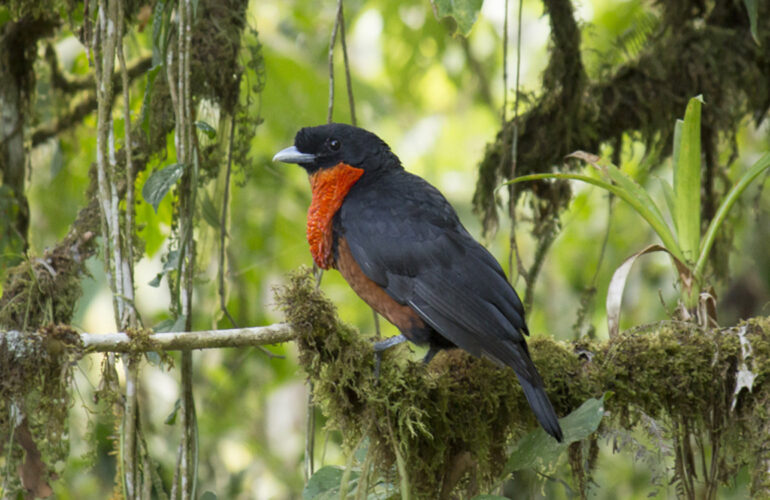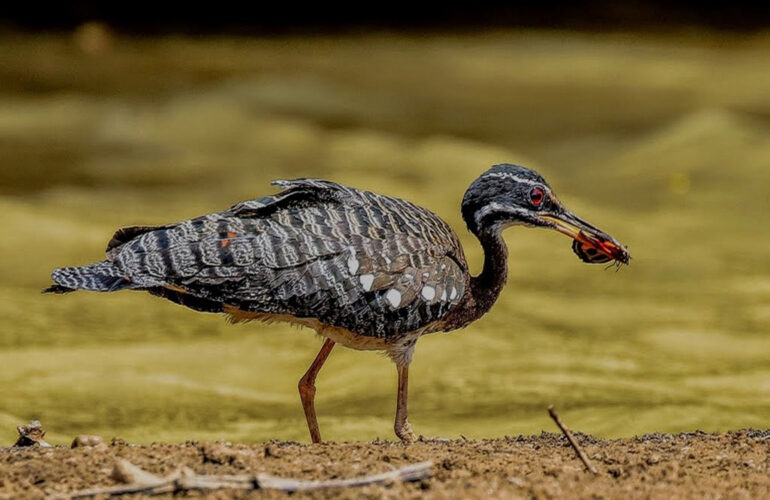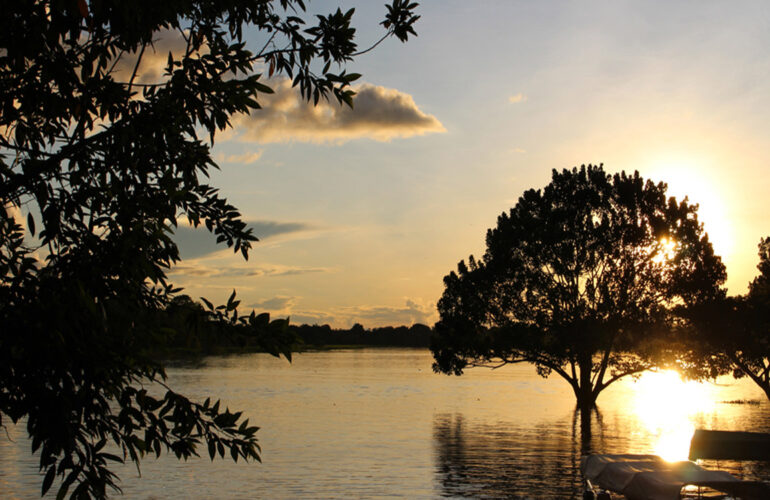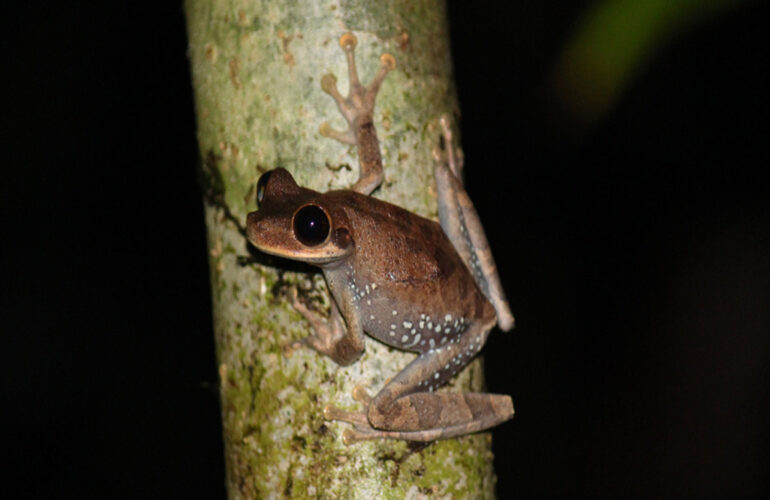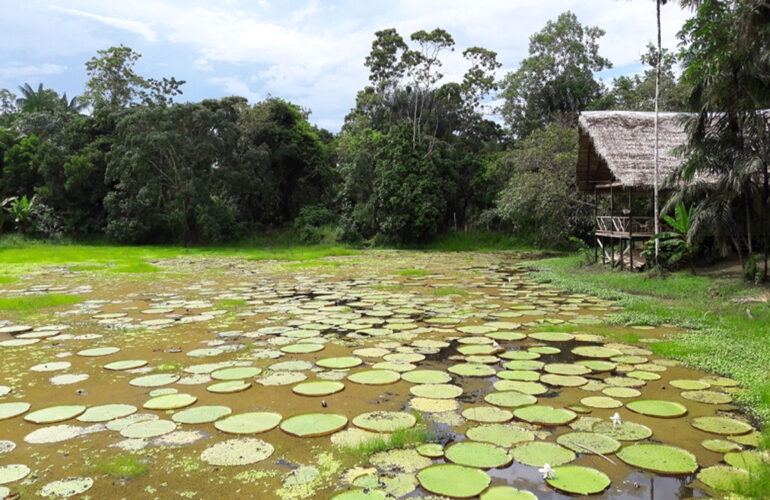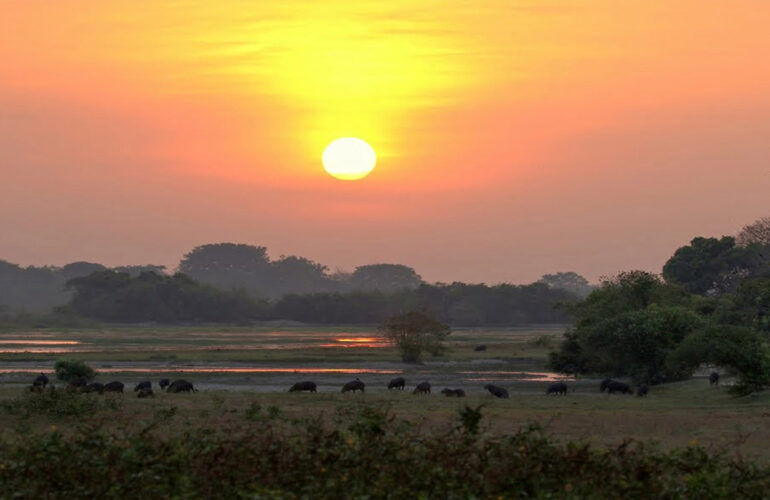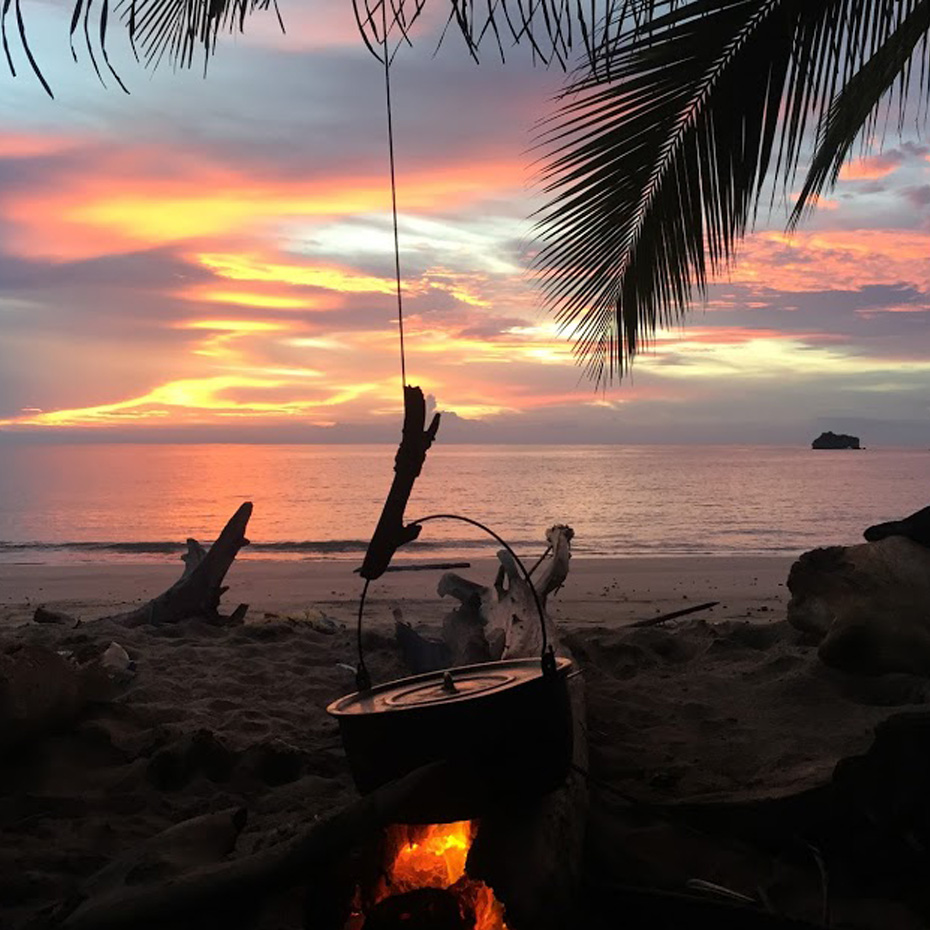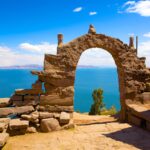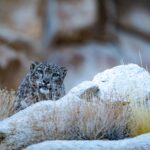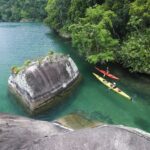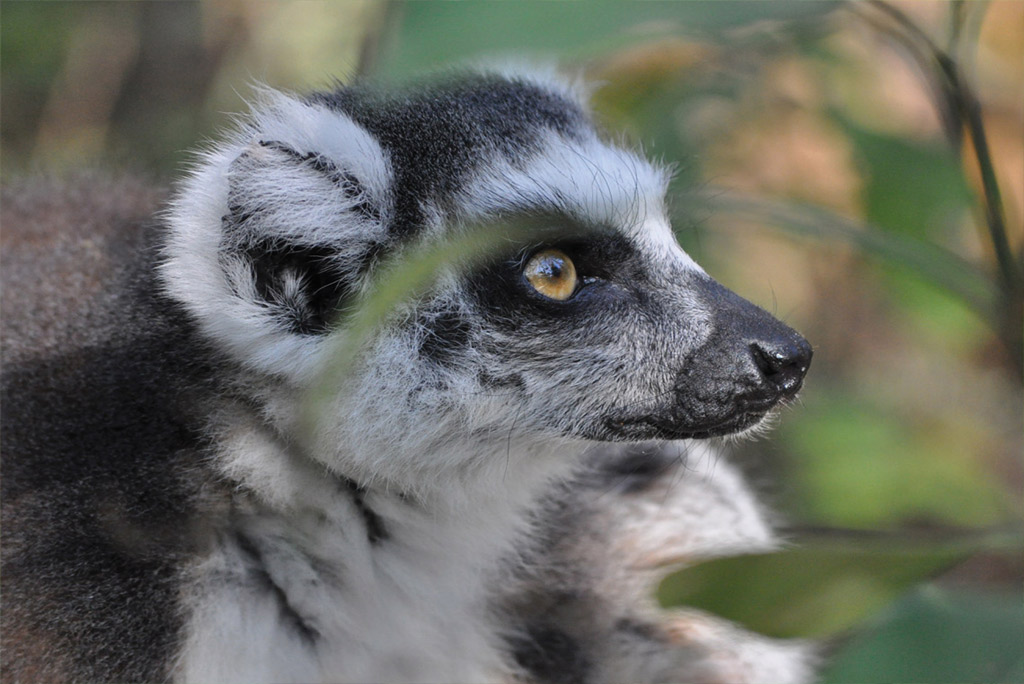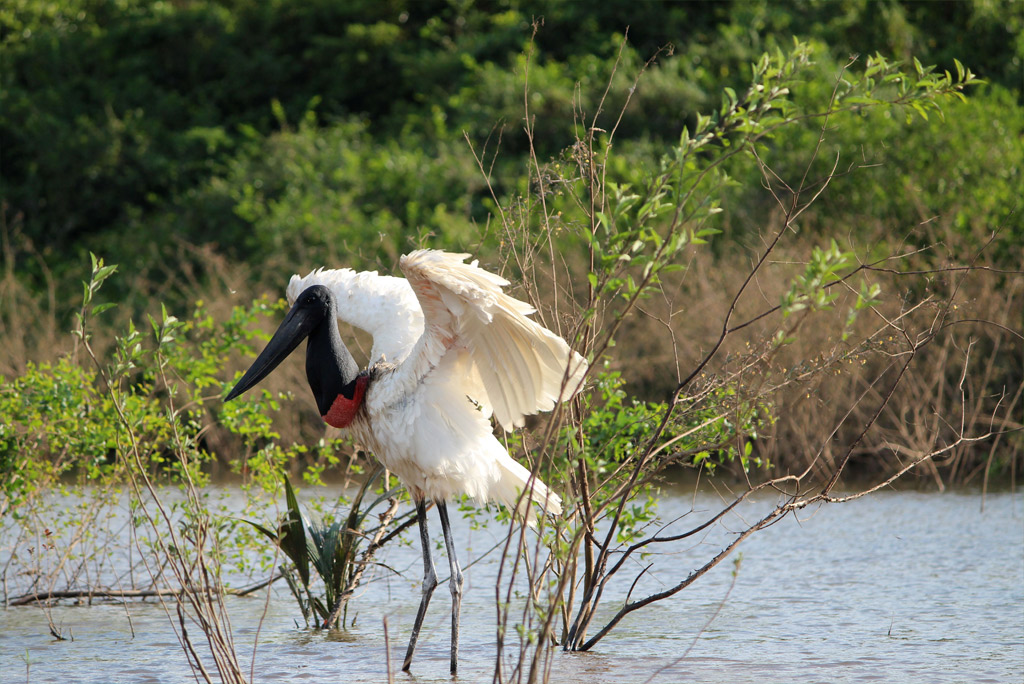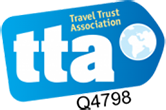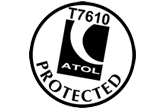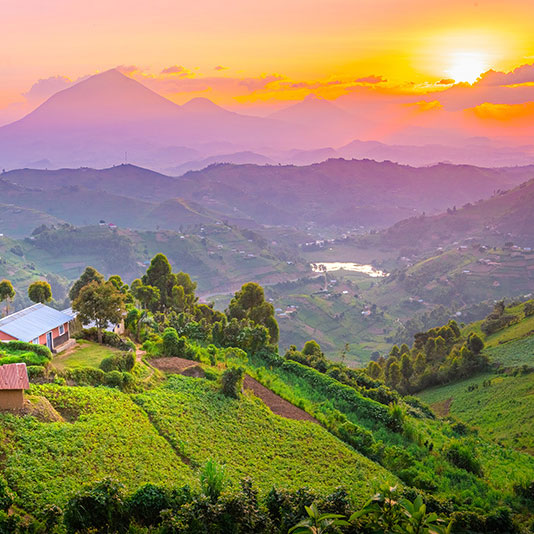‘Colombian Wildlife Discovery’ will allow you to experience the very best of Colombia’s wildlife as well as much of its colourful culture. Take in Bogota’s unique merge of cosmopolitan and rich history, birdwatch amongst the largest amount of bird species in the world, witness the rehabilitation of rescued primates from the illegal animal trade and spot the captivating Lake Tarapoto Pink and Grey River Dolphins. Furthermore, discover the nocturnal Llanos wildlife with both all-morning and night safaris.
Colombian Wildlife Discovery
 11 - 14 Days
11 - 14 Days
TYPOLOGIES
Wildlife
DIFFICULTY
Medium
MIN. AGE
8 Years
£ 5660
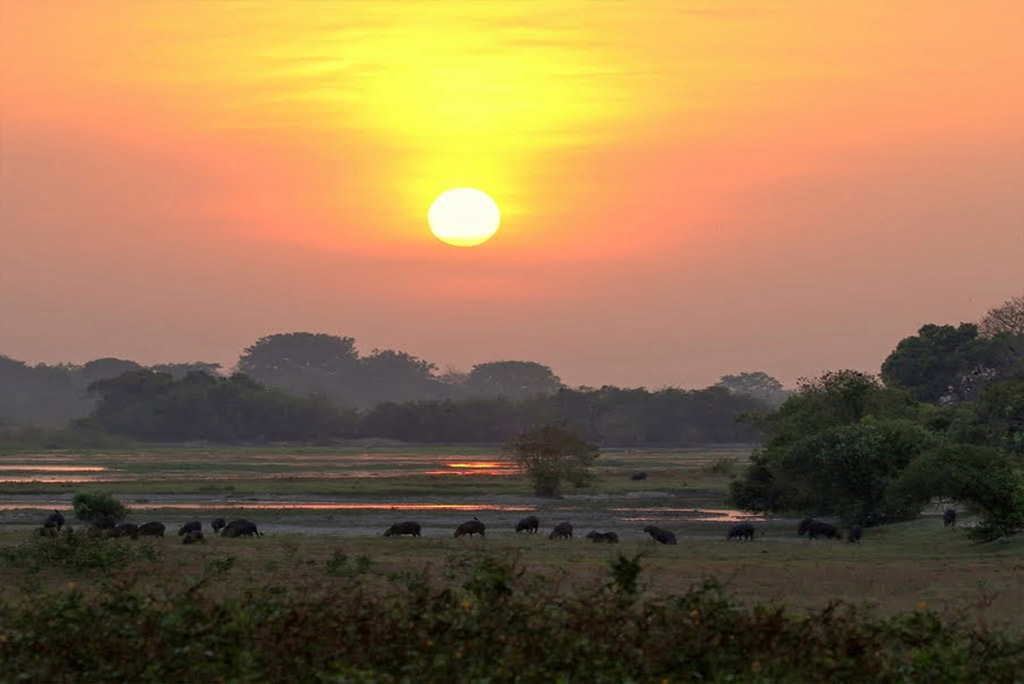
An Amazing Experience
Price £5,660/ $6,790
Excludes international flights.
Extension: £2,530
Tailormade Departures
Speak to our travel designers - All of our trips can
be designed to suit you and your dates of travel.
Day by Day
Located at 8,530 ft above sea level and surrounded to the east with its imposing Cerros Orientales (eastern hills) we find the capital and largest city of Colombia, Bogotá. With average temperatures of 62ºF throughout the year, Bogotá leans towards being a cool weather city for its 8 million or so inhabitants; a population that brings together people from all over the country, making Bogotá a multicultural city with a good representation of each region of Colombia. Bogotá offers visitors a vast variety of options for all kinds of activities related with culture, nature, history and nightlife. It boasts Colombia’s best museums, among them the world-renowned Gold Museum and an excellent gastronomic scene that is developing into an unmissable attraction. Having been the most important city since the Spanish colonial times, Bogotá is full of history and tales, where many of the most important moments of Colombia’s recent history have occurred. Also, the night life of Bogotá is amazing, its wide variety of bars & restaurants makes Bogotá a place to live and enjoy, and staying more than 3 nights, you’ll start to ‘get’ Bogota’s local vibe.
Overnight – Hotel
PALOQUEMAO MARKETS
"Be part of the hustle and bustle of the capital’s largest fresh produce market, ‘Paloquemao’. Here you will learn about Colombia’s rural or ‘campesino’ culture and enjoy the diversity and sheer abundance of produce grown in Colombia’s varied climates. Open seven days a week, this market supplies the ingredients for the majority of the city's best restaurants. You’ll have the chance to wander the heaving, colorful stalls, sample this country’s vast number of exotic fruits (some of which are unique to Colombia and the Andes) and any other traditional local foods that take your fancy. Enjoy the dazzling display of exotic cut flowers too - one of Colombia's top exports on spectacular display in this sprawling market."
BOGOTÁ CITY TOUR
Today we will have a tour through Bogota's colonial neighborhood, La Candelaria, the capital’s heart and soul. With its colorful houses, pretty balconies and village-y vibe, it's the city's cultural heart, too, with plenty of museums, the city's main library and a picturesque church on every second street corner. Home to artisans and musicians, it has plenty of bohemian cafes and restaurants, making it ideal for strolling and exploring its streets. Visit the capital’s main square, the imposing Plaza Bolívar, with its magnificent Colonial and Republican style buildings, including the stately Palace of Justice, Colombia’s Congress and Bogota’s Primary cathedral. Enjoy the architectural mix of old adobe houses, churches, and buildings of the Spanish Colonial period, alongside Baroque and art deco styles. Visit the Botero Museum, showcasing the 'oversized' artwork of Fernando Botero, one of Colombia’s best-known artists. The museum not only houses work by Botero but also other world-famous artists such as Dalí, Monet and Van Gogh.
GOLD MUSEUM
The capital's fascinating Gold Museum boasts the largest collection of pre-Columbian gold in the world, with tens of thousands of gold pieces displayed over three floors from all of Colombia’s major pre-Hispanic cultures. Colombia is the birthplace of El Dorado, a mythical city the Spanish conquistadores believed was home to untold riches of gold and jewels. Colombia’s pre-Hispanic cultures and their incredible mastery of gold is displayed here in spectacular fashion - you’ll gasp at the advanced techniques that were used and the incredible craftsmanship required to produce these intricate and elaborate pieces that were typically made for tribal chieftains. You may be surprised to find out that gold itself had no monetary worth as such and was instead used in ceremonies, often to revere and represent their most important deity, the Sun.
Overnight – Hotel Termales Del Ruiz
HUMMINGBIRD OBSERVATORY
You will spend the morning in Ecopalacio trying to spot the bear and on the way back to Bogotá, you will have a stop in the hummingbird observatory. This 'Hummingbird Observatory', high up in the mountains of La Calera, is a flower-filled sanctuary for these winged messengers, as they are known by indigenous cultures. Colombia is home to over 160 hummingbird species and here you can observe as many as 18 species, including the Coppery-bellied Puffleg (near-endemic), the Blue-throated Starfrontlet (near-endemic), the Glowing Puffleg, the Great Sapphirewing, the unbelievable Sword-billed Hummingbird, delicate Black- tailed and Green-tailed Trainbearer among many others. If you're lucky, you may spot the Silvery-throated Spinetail (endemic) and Red-crested Cotinga.
EASTERN ANDES HIGHLANDS
Today we will visit the High-Andean forest, the predominant ecosystem of Chingaza National Park and its buffer zones, certainly one of the most beautiful neotropical landscapes and home of the Andean Bear, the only bear in South America. Depending on the bear trail, followed days before by our local guides we will visit the National Park or buffer areas between 2,700 – 3,100 masl / 8,800 – 10,200 ft.
ECOPALACIO
Today you will wake up in the middle of the páramo in one of the most beautiful reserves of the park, Ecopalacio, a place that has been dedicated to conservation since before the national park was declared. Here the bear found a small area to feel safe when limestone mines worked in the area and were destroying its ecosystem. Now, Ecopalacio is one of the best spots to sight the bear.
The Andean Bear or Spectacled Bear, is the only bear in South America and is currently in the category of vulnerable species. Its presence is also a powerful indicator of the health of ecosystems and energizes the life of the forests when it knocks down bushes and branches to find food. For conservation of biodiversity, the spectacled bear functions as an umbrella species, that is, its conservation benefits the protection of the paramo ecosystem, the cloud forests and dozens of species that inhabit it. For numerous indigenous groups, the spectacled bear is also a sacred animal, a magical being that in some cultures was a link between heaven and earth, a mediator between good and evil, or an older brother. At this colder, high altitude climate we will have also the chance to spot also a great varieties of birds such as the stunning Blue-throated Starfrontlet (near-endemic) and the Amethyst-throated Sunangel hummingbirds, the raucous Brown-breasted Parakeet (endemic), diminutive Rufous-browed Conebill (near-endemic), the Black-billed Mountain-Toucan, shy Rufous Antpitta, Green-and-black Fruiteater and many more birds that are typical of the high-Andean ecosystems of Colombia.
Today you will drive through the park to Laguna de Chingaza, trying to find the bear. After a long day you will be back to Bogotá to spend the night.
Today we’ll fly to Yopal and transfer to Hato Montana, located 2hrs 30mins from the airport, deep in the heart of Colombia’s Llanos region. Along the way the group will be able to note changes in the landscape as the ecosystem becomes more typical of the Eastern Plains, with opportunities to start wildlife watching from the cars. This may extend the journey time depending on what is seen along the way. After a nice drive, you’ll arrive at the ‘Hato’ (Llanero term for ‘ranch’) Montana, one of the many Hato’s that have been changing their activity from cattle ranching to tourism, with the aim to restore and preserve thousands of hectares of this region. This 9,000 hectare reserve and fully working cattle ranch has had a hunting ban in place for decades and the abundant wildlife that habits the savannah, forests, rivers and lagoons that make up the Llanos, has flourished with startling results.. Wildlife here abounds and during the dry season, where watering holes are less expanse and the wildlife is concentrated into smaller areas, it is not uncommon to rack up over 150 species of bird with many riparian specialities along with large mammals such as capybara, white-tailed deer, red howler-monkey, collared peccary and even the enigmatic giant ant-eater and smaller tree-bound tamandua. Reptiles here include the giant anaconda and black caiman amongst others. A typical lunch ‘a la Llanera’ (stake-in-the-ground roasted veil) will be served on arrival, before heading out for an afternoon safari with our host. The afternoon will be dedicated to a boat ride or 4x4 drive near the lodge to begin the wildlife watching here.
Today will be a full day dedicated to exploring the Hato in the search of the main targets such as the giant Jabiru stork, Nacunda Nighthawks and Orinoco Goose and the two Llanos restricted endemics – Pale-headed Jacamar and White-beared Flycatcher. The hato, given that it is so large, cannot be covered in a day or even 3 so discussions will be held with the group at the beginning of the visits to see what the wildlife tendencies have been like in the days leading up to the visit so the group can then make choices as to how time is best spent and what the best mode of transport is – by boat in search of the Anaconda or by 4x4 in search of other hidden gems. Lunch will be eaten at lodge before the group will have the choice to continue searching during the afternoon or after watching a legendary Llanos sunset, choose to wait for a nocturnal outing to try and find some of the hato’s more reclusive residents, such as the Armadillo and various cats, among them Jaguarundi, Ocelot, difficult Puma and of course Jaguar.
Our last complete day will be a day to finish exploring the Hato in the search of the species we haven’t seen yet. You will have lunch at the lodge and the afternoon to enjoy the surroundings of the property, activities at the ranch such as, monkey search, tour of the stable, artisan cocoa process, tour of the archaeological zone, crafts Workshop, etc. and of course, enjoy the last beautiful llanero sunset, before we head to the next destination of the trip.
After an amazing stay in the eastern plains, we’ll leave for Yopal airport for our flight to Bogotá. During your be leaving the plains behind to start entering again to the mountains of the eastern range.
Today we’ll leave the hotel nice and early ready for the next leg of our Wild Colombia adventure. Our flight to Leticia, the main city of Colombia’s Amazon region, which covers almost a third of the country, we’ll be transferred to the pier that reaches out to the mighty Amazon River. It’s hard to believe that this river – over 3km wide at this point, is but a stream compared to its size further down into the basin. Either way, this enormous, churning brown body of water that drains various regions both Andean and Amazonian into the Atlantic, is gigantic to say the least. Boarding the private launch you’ll head up-river for nearly 2 hours, or some 80km to the small car-less town of Puerto Nariño, Colombia’s first sustainable tourism destination. This small town is populated by the various dialects of the local Ticuna indigenous culture. Upon arrival in Puerto Nariño there’ll be some time to rest after checking-in to our delightful, local jungle lodge. Dinner will be had at a local restaurant and then an after-dark walk out of town will ensue, to one of the many trails that head off into the endless expanse of jungle. We’ll look for nocturnal wildlife such as frogs, insects and if fortunate, mammals scurrying along their trails. An early night will be ready for an early rise the next day.
An early start and packed breakfasts will be needed to ensure that we make the most of the day. A 5am rise will allow the group to transfer 30mins by launch and arrive at the Maikuchiga Foundation ready to set out at first light on the trails into the foundation’s investigation area. We’ll begin by walking through a secondary tropical forest looking out for the common Squirrel Monkey, tiny Pygmy Marmoset (among the world’s smallest primates), deeply coloured Yellow-handed Titi and if fortunate, Spix’s night monkey. After continuing further into the forest and as we start to see more primary growth, we’ll start to look out for large groups of Red-howler Monkeys and the large and impressive Humboldt’s Woolly Monkey – whose populations have increased since the community declared a self-imposed hunting ban back in 2003, when the foundation was created. Depending on the group’s ability a packed lunch will be either had on-trail or at the NGO’s base camp, about 1hr 30mins from the foundation main house.
Fundacion Maikuchiga - meaning ‘the monkey’s story’ – is located in the Ticuna community of Mocagua. This NGO was helped set up by the American biologist and all-round legend Dr. Sara Bennett, regarded as one of Colombia’s foremost primatologists. The foundation’s main function is to nurture and rehabilitate monkeys that have either been seized from the illegal animal trade or from people who once housed them as pets. Along with environmental education projects and scientific investigation, Maikuchiga has been a leading voice fighting the illegal animal traffickers that unfortunately haunt the Amazon’s abundance. After returning from Maikuchiga to Puerto Nariño, and after some rest in the hotel, you’ll be off again to visit the local NGO Natutama where some of the town’s conscientious locals have put together a real showcase of their handicraft abilities in order to create awareness for the delicate Terra Firme and Varzea ecosystems and the importance of protecting them. After this visit you’ll be invited to the most important building in any Amazonian community – the Maloka, to be with the elders and learn and hear about their culture and beliefs that span back over 10,000 years. After the Maloka visit we’ll head back to the hotel.
Today will begin with a relatively short boat ride to one of the Colombian Amazon’s main attractions – Tarapoto Lake. This ancient (and massive) oxbow lake is around 14km in length and surrounded by virgin jungle. You’ll make your way across the ‘Correo’ canal into the lake looking out for species of monkey, bird and if fortunate, river otters. Along the river we’ll be looking for soaring raptors that dominate the skies and those that also perch typically by the riverside such as the massive Black-collared Hawk and Laughing Falcon. Abundant riparian wildlife dominates with Great Egrets, Cocoi Herons and Black-capped Donacobious lining the reedy banks.
Lunch will be had at the lake before heading out in search of the famous Amazonian Pink River Dolphins, which on occasion can be quite inquisitive and start to burst the surface quite close to the boats. These are a marvel of evolution, almost blind due to their perfect adaptation to the Amazon’s murky and silt-filled rivers. It’s worth noting that these dolphins hold massive cultural importance for the Ticuna and are considered sacred to most if not all Amazonian cultures. Grey River Dolphins also occur and will be looked for. After finishing the rounds of the lake and after looking for Black Caiman and other waterborne specialities, we’ll walk a trail or two, exploring the lake’s pristine surrounding forests, looking for the legendary and immense Ceiba tree, owner of many legends and myths among the Ticunas. Along the way our local guide will also spot and describe uses for local medicinal plants – a wealth of fascinating knowledge, passed down over thousands of years, verbally from generation to generation. Without doubt as we walk, we’ll be on the lookout for the amazing diversity of birds – particularly antbirds, tanagers and parrots and other animals that hop around quietly in the understory and high above in the canopy. We’ll return to Puerto Nariño for dinner and then head for our activity prepared with the local community this evening.
MALOKA BARLOVENTO
Located at the base of the majestic Sierra Nevada de Santa Marta, Villa PLaya Tayrona is one of the most beautiful beaches of Magdalena department. Thanks to its wonderful location in which beaches and forests converge, you will not have to walk far to enjoy nature right at the border with Tayrona National Park. Close to the beach, is also the mouth of the Piedras River, where the cool crystal clear waters flow down from the Sierra flow into the sea. There you can enjoy freshwater and saltwater beaches a few meters away from each other. Today is a transfer day and arrive at your hotel at the beaches of Sierra Nevada de Santa Marta and enjoy the stunning and unique view of the mountain rising from the ocean, a tropical beach surrounded by green nature, a landscape only possible under the “magical realism” of Colombia
TAYRONA NATIONAL PARK
The perfect combination of tropical rainforest, paradise beaches and Caribbean sea, it's no surprise that Tayrona National Park is the most visited national park in the country. The park extends from the mountains of the Sierra Nevada de Santa Marta down to the white sand beaches of the Caribbean sea. Take a morning trek to Arrecife (1hr aprox.), or La Piscina, the latter a beautiful, natural pool formed on the bay, making it a great place for a relaxing swim. This hike along the beaches of Tayrona gives a clear idea as to why they were voted the ‘world’s most beautiful’ by Discovery Channel. PNN Tayrona and its combination of humid tropical forest and stark dry forest to the south, harbors a stunning array of flora and fauna, much of it unique to this wetter stretch of Colombia’s Caribbean Coastline. Gorgeous sandy beaches, punctuated by smooth rocky outcrops that all emerge from the jungle-laden hills that descend to the sea. This tropical paradise is explored on foot, weaving in and out of jungle, mangroves, small rivers and beaches up to one of Tayrona’s most popular bathing sites – La Piscinita. For those who want to, the hike continues for another couple of km towards Cabo de San Juan, arguably Tayrona’s most photogenic spot.
Our final day on this Colombian Wildlife Discovery, you will have the morning at your leisure or to transfer to Cartagena airport for your flight back home via Bogota to your final destination.
Gallery
Submit your review | |
Hilary and I would like to thank you, your team and your partners in Colombia for our fantastic holiday. Being disabled and organising a wildlife based holiday requires a lot of research and effort and you all excelled yourselves. The hotels chosen were perfect and all the activities were superb. How I managed to get to many of them in my wheelchair I will never know, but our guide promised to take me "to the end of the world and back ' and he certainly did along with the help of our two wonderful drivers Rolando and John.
Their first challenge was to get me to the top of Montserrate via the cable car. No mean feat considering the altitude and very steep path. Our guide Daniel Restrepo was determined to show me everything that was possible and his dedication to the task went well beyond the call of duty! He was simply BRILLIANT. His English was superb, he was very friendly, helpful and his knowledge on all aspects of wildlife and Colombian history was astonishing. Nothing was too much trouble. He helped us with our photography so that from being complete novices we returned home with some superb pictures - far better than any previous trip. When certain feeding stations were not showing the normal amount of birds due to lots of flowering plants or fruiting trees, he took it upon himself to find others. When one of our intended hummingbird visits was closed, he organized a visit to his in-laws who have an amazing garden with bird feeders. They made us feel very welcome as did his partner Sara who kindly cooked us and our driver dinner one night when we passed through his home town. The reserve he added at Don Miguels one day had by far the most species of birds with a perfect set up. Daniel was with us from 5.30 am until after dinner everyday. He went through our photos every night giving us tips and making sure we had logged the correct names. He even arranged to go to a Salsa lesson and dance session in Cali when Hilary expressed an interest on our last night.
We cannot fault Daniel in any way. Our drivers were both equally helpful in getting Jon about in his wheelchair and both lovely warm kind people. We will miss them all!
During our 3 week trip we saw 17 mammals including Giant Anteater, Lesser Anteater, Ornate Titi, Night Monkeys, Red Howler Monkeys, Tapir and the Spectacled Bear with a cub and their smallest wild cat the Oncilla. We also saw 42 different hummingbirds including the Sword billed and Long tailed Sylph. We eventually photographed 223 different birds including the Cock of the Rock, various Toucans, Red headed Barbet, Toucan Barbet, Bay Tanager and the Multi coloured Tanager to name a few of the highlights, and many endemic rare birds!!
We left as friends and hope to use their services again sometime.

